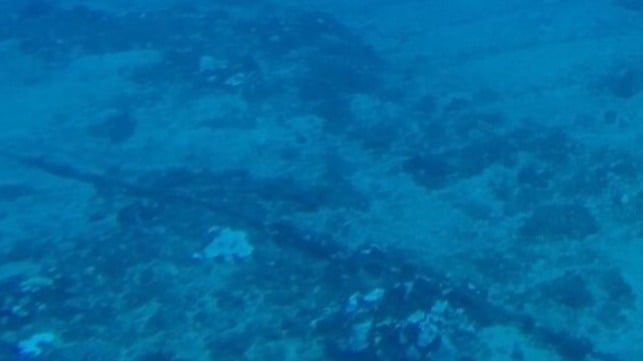Finland-Estonia Power Cable Goes Dark, Prompting Sabotage Concerns
Subsea Cable Outage Sparks Sabotage Speculation

On Christmas Day, a significant incident occurred in the Baltic Sea that has raised alarms and sparked speculation about potential sabotage. The EstLink2 subsea power cable, which connects Finland and Estonia, experienced a sudden outage. This event has led to concerns about the region’s critical infrastructure security. The Finnish utility company Fingrid detected the outage at 12:26 PM local time. As investigations unfold, the possibility of a “hybrid” attack on subsea infrastructure is being considered. This article delves into the details surrounding the outage and the implications it may have for regional security.
Details of the Outage
The EstLink2 cable, a vital link for electricity transmission between Finland and Estonia, went offline unexpectedly. Fingrid is currently investigating the cause of the outage. It remains unclear whether the disconnection occurred underwater or on land. The cable has a history of malfunctions; it was offline for several months earlier this year due to an internal short circuit. A spokesperson for Fingrid stated, “Nothing is ruled out, all stones and stumps are being turned and we will see what causes it. Yes, [sabotage] is also considered an option.” Fortunately, backup power capacity is available, so the outage is not expected to disrupt electricity supply for consumers and businesses in the immediate future.
The geopolitical context surrounding this incident adds to the urgency of the investigation. In recent months, there have been concerns about the security of subsea cables in the Baltic Sea. European investigators have linked Chinese-flagged vessels to previous incidents where subsea cables were severed. These vessels reportedly dredged their anchors over long distances, causing damage to the cables. Sources suggest that these actions may have been directed by Russian intelligence. As a result, the investigation into the EstLink2 outage is likely to scrutinize the activities of nearby vessels at the time of the incident.
Viking Line Expands Tallinn Route Cinderella and Gabriella Join Viking XPRS for Summer Sailing
Potential Suspects and Investigative Focus
As the investigation continues, attention has turned to two vessels that were in proximity to the EstLink2 cable during the outage. The Chinese container ship Xin Xin Tian 2 and the Cook Islands-flagged tanker Eagle S are under scrutiny. The Xin Xin Tian 2 was in the area, but its Automatic Identification System (AIS) track shows no signs of slowing or maneuvering over the site of the cable break. As of Wednesday night, the vessel maintained its course and speed, heading outbound in the Baltic Sea.
In contrast, the Eagle S exhibited more suspicious behavior. This tanker, which recently changed ownership and flag registry, had its last port of call in Ust-Luga, Russia. AIS data indicates that the Eagle S slowed down over the cable during the critical time period. Afterward, it performed a round turn and stopped in Finnish waters, where it was joined by the Finnish Coast Guard patrol vessel Turva. This response suggests a possible interdiction, raising further questions about the tanker’s activities.
The Eagle S has a concerning inspection record, with its last two port state control inspections revealing a total of 33 deficiencies. These included issues related to watertightness, structural integrity, and alarm systems. Such deficiencies could raise red flags about the vessel’s operational safety and its potential involvement in illicit activities. The combination of its recent call at a Russian oil port and its ties to operating interests in India and the UAE may suggest connections to Russia-linked “dark fleet” operations. As investigations proceed, the focus on these vessels will be crucial in determining the cause of the EstLink2 outage and assessing the broader implications for regional security.
